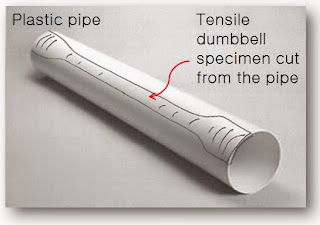Expert Technical Advice for Plastics Technology
Technical experts at Tinius Olsen have contributed their technical prowess to industry publications and their readers for many years.
This month one of the leading titles within the plastics industry, Plastics Technology, have published an excellent interview with our own Applications Specialist, Harry Yohn. The feature takes an in-depth at the use of a melt indexer, such as the MP1200, to test the melt flow rate as defined by current test standard procedures.Harry has been a product applications specialist for Tinius Olsen since 1996 and has nearly 32 years of experience in mechanical and testing of plastics. He is also Vice Chair of the ASTM International Committee D20 on Plastics, as well as Subcommittee Chairman for the Thermal Properties group, D20.30. He has also been honored with several ASTM Service Awards.
In the Plastics Technology interview, Harry suggests that although all operators say they follow the published test standards, such as ASTM D1238 or ISO 1133, not all are following them exactly as they are written.
As Harry says; “you can make your life a whole lot easier by paying close attention to the procedural steps detailed in the test standards, thus ensuring accuracy, efficiency and smooth operation.”
To help establish his point, Harry focuses on ASTM D1238 (Standard Test Method for Melt Flow Rates of Thermoplastics by Extrusion Plastometer), Procedures A and B and the correct procedures to follow in each.
“The melt-flow test is a measure of the mass of material that is extruded through a standardized orifice in a die under standardized temperature and load conditions. It is a common test used in the plastics industry. Values obtained from the test are useful to processors for material selection and processing machine setup,” says Harry.
The feature follows the test procedures from Test Setup through to the Preheat Period, Test Measurement and the all important Clean Up - a part of the procedure Harry is very keen to emphasize.“After a test is completed, the remaining material must be purged from the bore and the equipment needs to be cleaned. The importance of cleaning the machine properly cannot be over emphasized. Some materials are easily cleaned from the machine while others present challenges. After the remaining material is purged from the bore, the piston rod and the die are removed from the bore and wiped down with a cotton cleaning rag. Both items should be cleaned down to bare metal.”
But it’s not just about following the procedures to the letter as also ensuring you are up to date with any changes to existing Standards is vital.
“It is important to remember that standards can change over time, based on real-world input from the many members of various industry associations like ASTM. In fact, the ASTM standard for melt flow was recently revised. That is why it is important to stay involved in the industry and to always be sure you are working with the latest version of any standard.”
“It is also good practice to review the latest version of the standard before testing, regardless of whether you are a new user or an experienced testing veteran. Updated test standards can be downloaded from www.astm.org for a small fee,” said Harry
To read the interview in full head over to the March online edition of Plastics Technology, it’s well worth a read! https://pt.mydigitalpublication.com/publication/?m=59267&i=694853&p=46





Comments